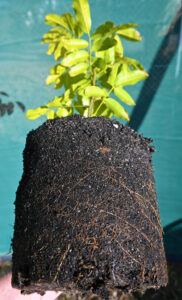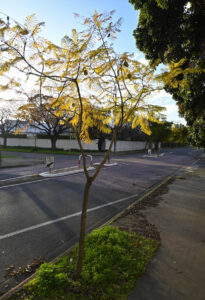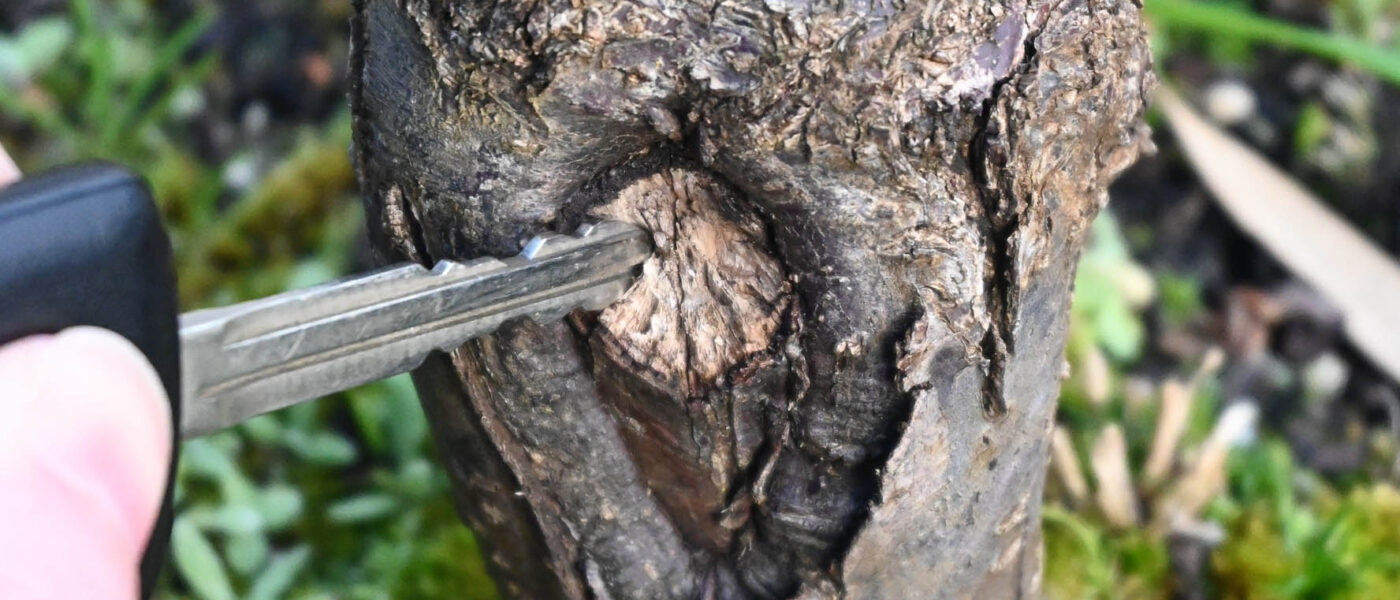Inspecting your investment – what to look for when buying trees
By Dan Austin
For most landscaping projects, the most significant costs regarding living elements are those incurred through the inclusion of established ornamental trees, and rightly so, because when buying established trees, we are buying time as well as a plant,
With such costs surrounding the purchase of nursery-grown trees, it’s worth taking the time to inspect your investment to ensure you are going to get value for your money for decades into the future. Over the last ten years, buying a tree that will stand the test of time has become increasingly likely, thanks to ongoing research and the production of best practice documentation becoming available for nurseries to hone their production systems. This documentation has included the ‘Australian Standard 2303:2015 Tree Stock for Landscape Use’, which, while valuable, was considered overly rigid and did not allow nurseries working with a diverse range of species to meet all of the specifications suggested in the document. As such it was reviewed and replaced with the more widely accepted ‘Australian Standard 2303:2018 Tree Stock for Landscape Use’.
One of the key quality tree indicators outlined in these documents has been the relationship between trunk calliper and tree height, and the need to ensure a trunk has developed significant girth to support its canopy. However, there are many other factors to consider when deciding if you are looking at a desirable tree. A good process to work with, if you don’t happen to be carrying around a copy of the Australian Standard, is to inspect three key areas of your tree and answer some important questions – so here they are.

Inspecting the root ball
In an ideal world, you would be able to take your tree out of a rigid pot for a visual inspection, though this is not always possible, particularly when trees are grown in bags. However, when possible, a visual inspection of the root ball should reveal growing media that stays with the roots without falling away. Crumbling media is an indication that the plant’s roots have not yet colonised the container, indicating the tree was probably recently potted up and put out for sale prematurely. If the roots are holding the media but are congested and have begun to spiral around the container, you have a pot bound plant.
Pot binding is problematic, as the condition doesn’t correct itself once the plant is put into the ground. This is particularly relevant for the dicot group of plants. Instead of forming an outward reaching network of roots to gather nutrients and access water in soil, the roots of pot bound plants continue to spiral, eventually girdling and constricting each other’s growth. A tree may grow and look healthy while well-fed and irrigated at its base, but if left to fend for itself, will lack the reach to access adequate moisture and nutrition and will likely live a short life. The loss of many trees during the water restrictions of drought years gone by, is an excellent example of this phenomenon. A girdled root system will also provide poor anchorage and the tree will be more prone to toppling over.
Another common root disorder is known as J-rooting. This tends to occur when seedlings are pricked out and potted on. If a seedling is forced into a new pot of growing media without its tap root facing down, it can form a J arrangement, growing toward the pots surface. Once hitting the surface, these roots often grow down again, creating a zig-zag effect and causing the same issues as pot bound roots. If you find these disorders present, they can be remedied by cutting through the affected roots and teasing those remaining into an outward position before planting, though plants treated this way are unlikely to be as successful as plants that haven’t experienced the disorders in the first place.
Inspecting the bud or graft union
Many trees are budded (a bud of a desirable plant is implanted onto a different and desirable rootstock) or grafted (a larger piece of a desirable plant known as a scion is united with a different and desirable rootstock). If not done well, budding and grafting can be an entry point for disease, decay and a point of weakness in adult trees later in life. When inspecting a graft union, you want to see the healthy outer layers of the scion and rootstock firmly united and advancing over any exposed heartwood. However, there are many types of grafts and not all will appear this way.
When inspecting the site of a bud union you want to see a strong attachment of the bud (which will have now shot and become the trunk) and the root stock. Additionally, when trees are budded, the above-ground growth of the rootstock is maintained until the foreign bud becomes active, then the rootstock growth is removed. This creates an injury at the budding site. It is a good idea to check for two issues with this wound. Has a long stub been retained that will impede the wound healing, or has the wound been compromised, and rather than the outer tissues advancing to seal over the cut, are receding? Either issue will increase your tree’s susceptibility to disease and failure.

Inspecting the above ground structure
Above the ground, you want to be on the lookout for the presence of any obvious pest or disease signs, suckering, crossing, rubbing and congested branches, poor pruning attempts and signs of physical damage, in addition to good trunk calliper, it is also a good idea to make a judgement on the structure of the tree’s canopy, particularly focussing on an even 365-degree distribution of any main scaffolding branches.
Also, check the trunk height below any competitive leader branching. Is it the desired height for canopy development or has the branching occurred lower than desired? If the later is observed, competing branches will need to be removed while still small, to avoid large wounds later, and the tree staked to straighten the remaining leader.
Keep these points in mind to get value for money when selecting stock and there is a good chance a well-planted and cared-for tree, that ticks all these boxes, will be around to be enjoyed long after we are gone.
Main photo: A compromised wound on a budded tree with receding vascular tissue and soft decay

